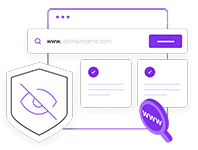A type of Internet fraud that aims to steal a user's account information by creating a copy of your bank, email, social media account, or an organization's web page that requires you to enter information. The word "Fishing", which means "fishing", is replaced by the letter 'ph' instead of the letter 'f', inspired by the idea that you can catch at least one fish when you're fishing.
For example, a copy of the login screen of your social media account comes to you by e-mail and you are asked to enter your username and password in some way. If you carelessly send this information by typing in the input boxes on the page, the hidden code in the page sends the information you entered to the scammers.
What information is stolen from the phishing attack?
With this method, fraudsters aim to capture information that is important to you, such as your credit card, bank login information, passwords, account numbers, social media account information.
Phishing by Email
Scammers send you a copy of the web site of the organization they are targeting. On the page that appears as an innocent informational mail, there is a section asking you to login. If you inadvertently enter your user information on this login screen, your information is received by scammers.
Another e-mail counterfeiting attack is carried out by an informational mail coming from a domain that is very similar to the web address of the targeted institution. When you look carefully at the sender information, you can see immediately that the 1 or 2 letters are different.
eg: customer-service@akbankk.com.tr
A second letter "k" at the end of the word akbank may result in fraudulent possession of your banking information in a careless moment.
- Domain
-

- FREE Whois Protection is provided for all domain name registrations.
-
- Hosting
-

- SSL certificate is provided FREE of charge in all our web hosting packages.
-
- Servers
-

- Full performance, full hardware, server leasing solutions for every budget.
-
- Software
- E-Commerce
- Services
- Corporate
-
Corporate Information
Contact & Corporate Information About Us References News & Announcements Blog Articles Careers Bank AccountsCustomer Service0850 346 40 62
Our Email Addressinfo@wisesoft.com.tr
Promotion10% Welcome Discount
-
- Resources
-











